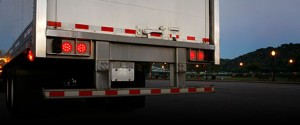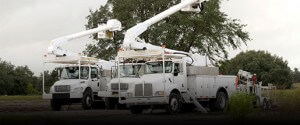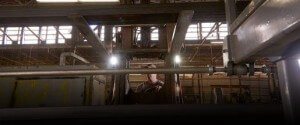Electrical Connections
- Trailer Connectors keyboard_arrow_right
- Air Products & Electrical Assemblies keyboard_arrow_right
- Terminals & Connectors keyboard_arrow_right
- Wire & Cable keyboard_arrow_right
- Support & Protective keyboard_arrow_right
- Switches & Electrical Assemblies keyboard_arrow_right
- Battery Connectors & Cable keyboard_arrow_right
- Kits & Tools keyboard_arrow_right
Company
- Company Profile keyboard_arrow_right
- Careers keyboard_arrow_right
- Case Studies keyboard_arrow_right
- Contact Us keyboard_arrow_right
- Media Center keyboard_arrow_right
- Grote News keyboard_arrow_right
- Trade Shows & Events keyboard_arrow_right
- Quality keyboard_arrow_right
- Star Safety Technologies by Grote keyboard_arrow_right
Tech Support & Information
Customer Information
Dictionary of Terms
- ALTERNATING CURRENT – Current that continuously reverses direction
- ALTERNATOR – A device powered by a vehicle’s engine that creates electrical energy to charge batteries and power on-board devices.
- AMERICAN WIRE GAUGE (AWG) – A U.S. standard set of non-ferrous wire conductor sizes.
- AMMETER – A device for measuring amps.
- AMP – Short for ampere, a standard measure of electrical current. The amount of current pushed by one volt through a conductor with one ohm of resistance.
- BASE – Bases provide a foundation for the rest of the lamp, hold the socket and provide the mounting points.
- BATTERY – A device that stores an electric charge as chemical energy and converts it back to an electrical charge when needed to power on-board devices.
- BATTERY POSTS – The metal studs that provide connection points between cables and batteries
- BOOT – The end of a pigtail that attaches to a lighting device.
- BRAIDED CABLE – A flat cable made from bare woven wire. Typically used as a ground cable.
- BULLET CONNECTOR – Rounded end connector that fits into matching female socket for easy connect and disconnect.
- BUTT CONNECTOR – Allows an end-to-end connection between two conductors.
- CABLE TIES – Flexible devices, designed to hold groups of wire in bundles, that employ a ratchet action to secure the tie at the correct diameter.
- COMPLETE CIRCUIT – A circuit that has a power source, a load such as a light or motor to power and a ground point.
- CONDUCTOR – Typically metal that forms the core of a wire or cable that carries an electrical current.
- CONSPICUITY TAPE – Conspicuity tape is a highly reflective material used on trucks and trailers to indicate the presence and extent of vehicles especially trailers.
- CONTINUITY TESTER – A device used to determine if a circuit is complete or interrupted.
- CONVOLUTED TUBING WRAP – A corrugated, flexible tube used to organize and protect wires.
- CORROSION – A gradual destruction of metal parts by a chemical reaction. It generally results in a build-up of residue and moisture often causing failure of the connection.
- CRIMP – The process of inserting a conductor in the tubular portion of a connector and using a special tool to squeeze the tube until it grips the conductor and creates a strong mechanical and electrical connection.
- CURRENT – The flow of electrons through a conductor.
- DIELECTRIC – A material that is a poor conductor of electrical current. Typically used as insulation for wire and cable, often applied as a coating to protect connections from moisture and corrosion.
- DIODES – Part of the alternator which convert the AC current from the alternator into DC current usable by the battery and other on-board devices.
- DIRECT CURRENT – A current that flows in only one direction. Typically used in vehicle electrical systems.
- DOT – The Department of Transportation is an umbrella agency for most transportation related agencies.
- ELECTROLYTE – A fluid made up of water and acid that reacts with plates in the battery to produce chemical energy which is then converted to electrical when called for by the electrical system.
- ELECTRONS – Atomic particles orbiting the nucleus of an atom which move from atom in a conductor creating electrical current.
- FACTORY SEALED – Refers to the type of lighting device that is sealed, is not accessible in the field and must be replaced if it fails.
- FHA – The Federal Highway Administration issues Federal Motor Carrier Safety Regulations dealing with vehicle lighting and wiring.
- FIBER LOOM – A device made with asphalt for moisture protection, used to organize and protect wires.
- FIELD REPLACEABLE – Refers to the type of lighting device that has a replaceable bulb that can be accessed in the field.
- FILAMENT – The part of an incandescent bulb that glows providing light.
- FMVSS-108 – The Federal Motor Vehicle Safety Standard 108, issued by NHTSA, governs lighting requirements for trucks, buses and MPV’s
- FORWARD LIGHTING – Typically headlights and forward facing utility type lighting.
- GAUGE – Designates the size of a conductor. Typically the larger the number the smaller diameter of the conductor.
- GEL-MOUNT(r) – The bulb is held in place by a unique gel providing a secure anti-vibration mounting.
- GROUND – An electrical ground in effect drains away unwanted electrons after they have completed the task, such as creating light in a bulb. A ground can be literally the earth or large masses of metal such as a truck frame.
- GROUNDED CIRCUIT – A type of short circuit where an accidentally bared conductor makes contact with a ground without completing the designed circuit.
- HALOGEN BULBS – A filament type bulb with halogen gas for a whiter, longer lasting light.
- HEAT SHRINK TUBING – Tubing designed to protect a connection from moisture and damage by shrinking to a fraction of its initial size upon application of heat.
- HID LIGHTING – With High Intensity Discharge bulbs, light is produced by creating and sustaining an electrical discharge between two electrodes which excites a mixture of xenon gas and mercury for a bright white light.
- HIR BULBS – Halogen-infrared is a halogen type bulb with an infrared coating for greater light output and whiter light
- HOOK TERMINAL – A type of connector similar to a ring terminal that has a slot cut out of it giving a hook-like appearance.
- INCANDESCENT BULB – Typically a base with electrical contacts, glass enclosure, and a filament that glows as current passes through, which produces light.
- INSULATION – Material which is essential not conductive used to protect the conductor from accidentally being grounded.
- JUMPER – A connector that bridges the space between the pigtail and the wiring harness.
- LED – A Light Emitting Diode creates light when electrons pass from one plate to another and a photon is created. Light is created with almost no heat or invisible light as byproducts.
- LENS – Typically the most visible part of the lighting device, the lens adds the required color in many situations protects the bulb and is engineered for best visibility.
- LOOM – A device for organizing vehicle wiring, typically tubular, made to contain and control wires and protect them from damage.
- LUG – A type of wire termination generally oval in shape with a hole to accept a stud. Typically found on battery cables.
- MILLIMETER – A unit of length equal to one thousandth of a meter, or about 0.039 inches.
- MILLIAMP – One thousandth of an amp.
- MOUNTING TIES – Cable ties that have a hole for a screw or bolt to help secure the cable tie and wire bundle to the vehicle structure.
- NHTSA – The National Highway Traffic Safety Administration publishes FMVSS-108 and regulates lighting requirements for most over-the-road vehicles.
- OEM – Stands for Original Equipment Manufacturer. Typically refers to equipment supplied by the manufacturer.
- OHM – A unit of measure of electrical resistance. It takes one volt to push one amp of current through one ohm of resistance.
- OHM’S LAW – Formulas that quantify the relationship between Voltage, Amperage and Ohms
- ONE-WIRE SYSTEM – A circuit design that uses a nearby vehicle frame member for a grounding point rather than route the ground wire back to the power source.
- OPEN CIRCUIT – A circuit that has been interrupted, typically due to wire breaks and wires detached from devices.
- PARALLEL CONNECTION – A method of connecting lamps or other devices to a battery where each device has separate wires connected to the battery terminals. This maintains a constant voltage across each device, and if one device fails, the others will still function.
- PATH OF LEAST RESISTANCE – The route that an electric current takes as it attempts to reach a ground. As with a short circuit, not always in the designed path.
- PIGTAILS – Relatively short connecting cables that connect lights and jumpers
- POTTING – To protect an LED circuit board from moisture, contamination and damage, it is completely sealed in an operation called potting.
- PRIMARY WIRE – Typically wire used for radios, lights and other vehicle applications.
- PUSH-PULL SWITCH – Switch that is turned on by pulling on handle, off by pushing it back to the off position.
- RESISTANCE – Slowing the flow of electrons through a conductor.
- RFI – Radio Frequency Interference. Refers to the interference caused by the passage of pulsing current through a conductor.
- RING TERMINALS – A type of connector that is shaped like an “O” which fits over a stud making a very secure connection.
- SAE – The Society of Automotive Engineers
- SEALED BEAM – This type of lighting unit is essentially an incandescent bulb filament sealed inside a heavier, aim-able glass enclosure.
- SECONDARY WIRING – Refers to the wire and cables that carry higher voltages such as ignition wires and coil wires.
- SERIES CONNECTION – A method of connecting lamps or other devices to a battery where each load is connected along a single circuit of wire. This maintains a constant current to each device. If one of the devices fails, the circuit will be broken and none of the devices connected to it will function. (Think of Christmas tree lights.)
- SHORT CIRCUIT – A condition created when two bared conductors come in contact causing the current from one to be grounded before achieving the designed task.
- SIDE MOUNT – A battery with connections on the side rather than on the top.
- SILL HARNESS – A special type of wiring harness used in the rear of trailers to provide power to the lights in the rear.
- SOCKET – The part of a lighting device that holds a bulb and provides electrical contact.
- SOLDER CONNECTION – Soldering is the process of making a connection by heating the conductors and melting a special metallic mixture into it, which is allowed to cool and solidify.
- SPADE TERMINAL – A connector that has parallel fingers that are designed to slip under the attaching screw.
- SPIRAL WRAP – A spiral cut flexible tube used to organize wires, which allows easy wire exit without affecting the other wires.
- STRANDING – The process of using many smaller wires together in place of a single large conductor.
- TERMINALS – Fittings for use with wire and cable to connect them with other conductors and devices.
- THREE-WAY CONNECTOR – Allows connecting up to three wires.
- TINNING – The process of applying a thin coat of solder to the bared conductor as a way of protecting it from corrosion.
- TOGGLE SWITCH – Switch that is turned on by moving a lever to the correct position.
- TOP MOUNT – The style of battery with the posts on the top.
- TORSION-MOUNT(r) – A special, anti-vibration mounting.
- VALANCE – The outside “shell” of electrons that surrounds the nucleus of an atom
- VAT – Voltage/Amperage Tester
- VOLT – A measure of force which causes one amp of current to flow through a conductor with one ohm of resistance.
- WIRING HARNESS – A set of unitized wires, typically color coded that form the backbone of vehicle lighting systems.











